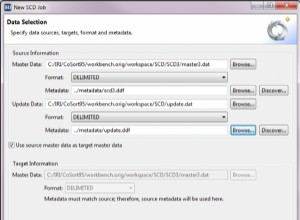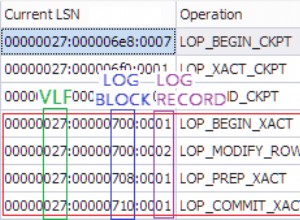L'SQLException non proviene direttamente da MySQL, probabilmente è attivato dalla lingua del tuo client. MySQL genererà semplicemente un avviso che normalmente puoi ignorare. Qualunque cosa, il ALLOW_INVALID_DATES La modalità SQL dovrebbe effettivamente fare il trucco:
Avvertimento:
mysql> SET @@SESSION.sql_mode='NO_ZERO_DATE,NO_ZERO_IN_DATE';
Query OK, 0 rows affected (0.00 sec)
mysql> insert into test (date_created) VALUES (str_to_date('','%m/%d/%Y'));
Query OK, 1 row affected, 1 warning (0.01 sec)
mysql> show warnings;
+---------+------+-------------------------------------------------------+
| Level | Code | Message |
+---------+------+-------------------------------------------------------+
| Warning | 1411 | Incorrect datetime value: '' for function str_to_date |
+---------+------+-------------------------------------------------------+
1 row in set (0.00 sec)
Nessun avviso:
mysql> SET @@SESSION.sql_mode='ALLOW_INVALID_DATES';
Query OK, 0 rows affected (0.00 sec)
mysql> insert into test (date_created) VALUES (str_to_date('','%m/%d/%Y'));
Query OK, 1 row affected (0.03 sec)
Modifica: Se stai cercando un modo per riscrivere la query, puoi provare qualcosa del genere:
update atable
set adate=NULL
where anum='1'
Ovviamente, questo richiede che adate è nullable.




